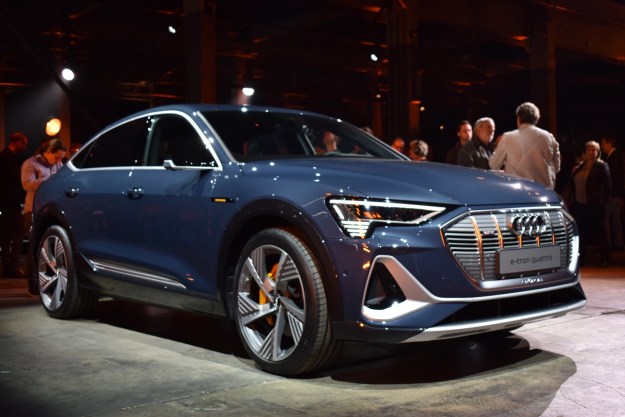Audi is one of the most technologically progressive automakers around. In fact, its whole company slogan, “Vorsprung Durch Technik,” is focused on it. The phrase translates to “Progress Through Technology.” Audi has pioneered countless technological advancements and improvements, from safety systems to vehicle construction methods. But good lord does it love headlights. Audi has easily been the most influential headlight maker (weird flex, I know) and now it’s back with a set of frickin’ laser headlights.
I love it. Audi isn’t even pretending anymore, it just wants to put supervillain tech in the hands of all its drivers. And these headlights are next-level awesome, so you shouldn’t be mad. Not only can the beams of multiple lasers create the kind of focused light that prevents other drivers from being blinded, but apparently they are also pretty good at playing party games.
Check out this video Audi released a while ago showcasing the concept:
If you’re not allowed to watch because you’re at work (sucker!), here’s a quick description: Audi’s concept Digital Matrix Light array is able to project an interactive game on a blank wall for a child to play against. It is a soccer/football goalie and the whole system is able to keep track of what shots make it into goal, and which attempts the projected goalie is able to “stop.” It is astoundingly cool technology and could make for some easy babysitting in the future.
While the laser headlights on the E-Tron Sportback don’t offer such fun and games (at least not yet), they do enable some pretty astounding features. The lights themselves work by breaking down the streams of illumination into minute pixels, leading to “high resolution” lighting according to Audi. Inside each array are small chips containing micromirrors that are each just a few hundredths of a millimeter. The arrays can tilt each micromirror up to 5,000 times per second through electrostatic fields. Depending on the setting, the LED light is either directed via the lenses onto the road or is absorbed in order to mask out areas of the light beam.
The lights can generate dynamic leaving- and coming-home animations that appear as projections on a wall or on the ground. Welcome to the future buddy! Heads-up displays are for suckers, the real magic is in heads-up roads! It also enables a system that illuminates your lane brightly and adjusts dynamically when you changes lane. Finally, the (non-lethal) lasers can draw attention to any pedestrians the system detects. Theoretically, all the aspiring supervillian would need to do is to crank up the juice to start frying your enemies.

It’s easy to brush this off as concept technology, but it is coming to the new E-Tron Sportback next year. Audi also has a pretty good track record of bringing its concept technologies into the real world within a few years. You see, this isn’t the first time Audi has blown our minds with their strange headlight fetish.
The company was one of the first to introduce LED lights that killed the lightbulb altogether, and then in 2016 the company introduced the world to OLED lights on the TT RS. While other automakers are sticking with headlight technology that is 120 years old, Audi has already cycled through multiple new forms of lighting. I won’t be surprised if they create and capture miniature stars in their 2025 models.
So to all the future supervillains and babysitters out there, wait another few years and you too might have a car with interactive laser beam headlights. What an amazing world we live in…
Editors' Recommendations
- Audi GrandSphere concept shows how autonomy opens new design avenues
- 2019 LA Auto Show: Highlights, headlines, and everything awesome
- New Hyundai Ioniq electric vehicle gets big boosts in range and horsepower
- Lincoln Corsair Grand Touring adds plug-in hybrid power
- 2020 Karma Revero GTS adds performance to go with its sleek looks



